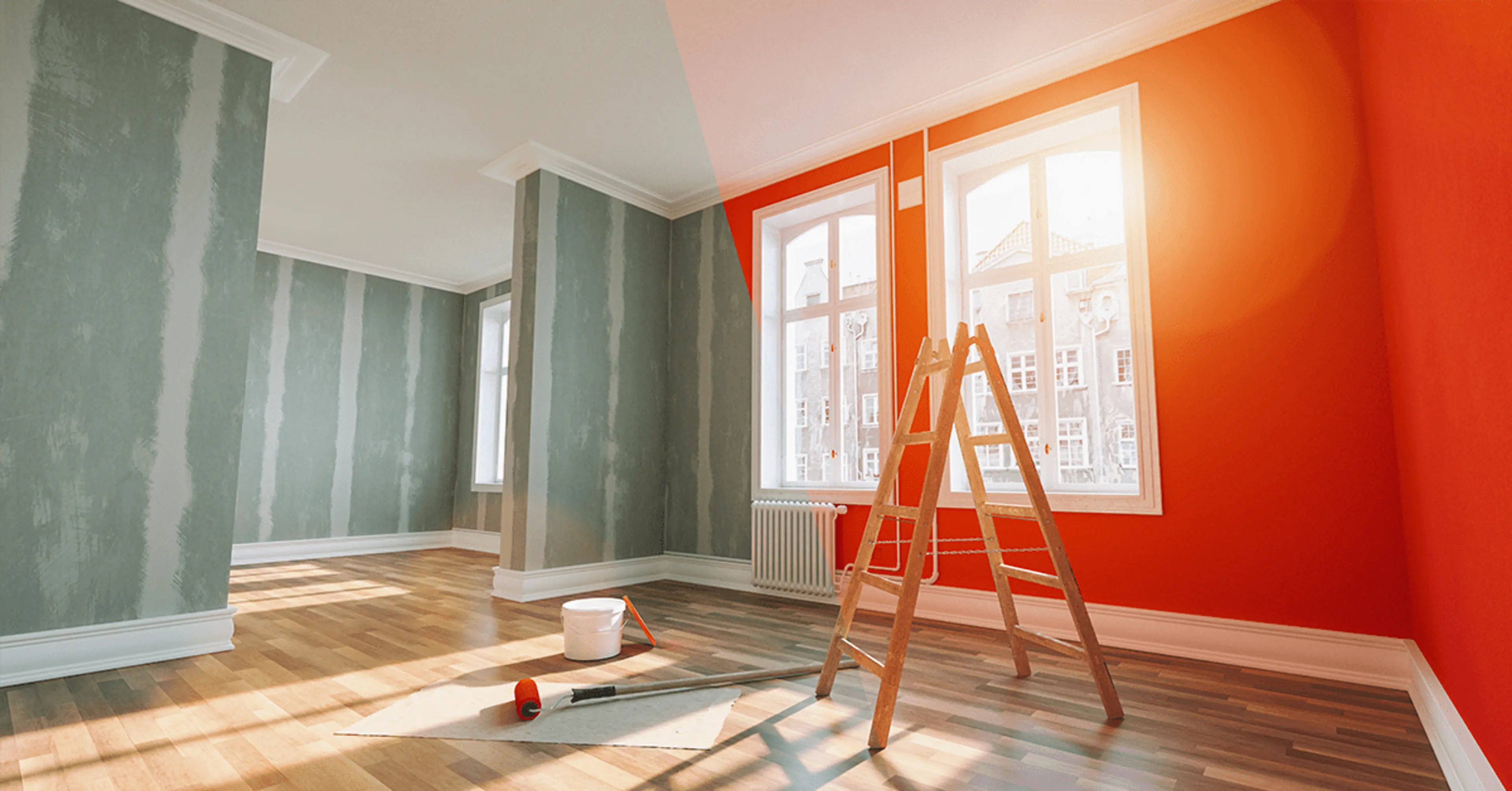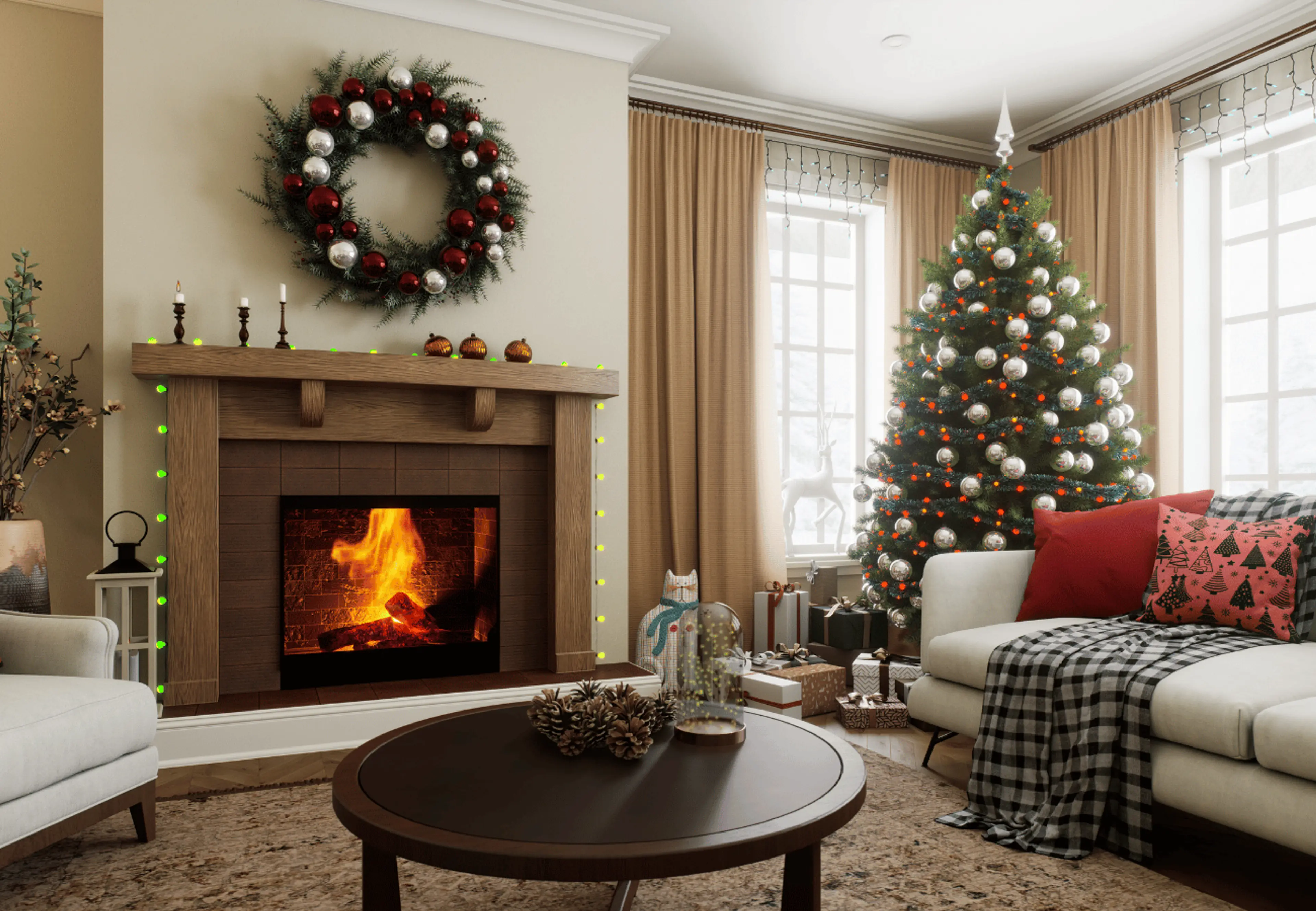How To Choose The Best Paint For Home Interior Walls?

 Aug , 2022
Aug , 2022- Berger Speaks
- 4 Min Read
Choosing the best paint for your home's interior walls is a decisive decision that can make or break your space's overall aesthetic and functionality. Whether giving your entire home a fresh look or simply updating a few rooms, selecting the best paint for home walls will affect everything from durability to ambience. When selecting paints, it's also essential to consider safe home painting practices.
Finish, colour, and durability are some of the significant considerations. Berger Paints offers an extensive range of high-quality options that can suit every taste and requirement. In this article, we will guide you through selecting the perfect paint for interior walls, ensuring you make a choice that complements your style and meets your practical needs.
What Are Interior Paints?
Interior paints are designed to make indoor spaces look better while providing specific wall protection. Unlike exterior paints, formulated to withstand rough and challenging weather conditions, interior paints resist wear and tear, fading, and staining due to everyday usage. These paints also help maintain health and comfort in living spaces through enhanced air quality and protective finishes.
Interior paints come in different types, and individuals may need to identify the correct one for their rooms' uniqueness. Usually, the two broad classifications are water-based latex and oil-based enamel. While each may have its properties, the nature of which one to use has sometimes made all the difference.
Water- Based vs Oil Based Paints
- Water-Based Paints: Most modern interior home paintings, including Berger Paints, are water-based. They dry fast, wash clean, and contain lower volatile organic compounds (VOC) levels. Water-based paints are the best paint for interior walls since they paint well and come in various sheens.
- Oil-Based Paints: These provide a smooth, glossy finish but take a little longer to dry. Their fumes are also relatively more potent. They are more rigid and less prone to wear and tear and can be used in certain places that receive high traffic, like kitchens and bathrooms.
Types of Paint for Interior Walls
Interior walls should be painted using the right paint type and wall colour combination, with knowledge of the finish and formulation types. Each offers different benefits based on the space's needs.
1. Emulsion Paint
Emulsion paints are the most commonly used paint for interior walls. They are water-based paints, which makes them smooth to apply, dry quickly, and have low odour. That makes them ideal for painting almost any room in a house. Emulsion paint has an option of matte, satin, or glossy finishes. It is mildew—and moisture-resistant, perfect for painting living rooms, bedrooms, and even the kitchen.
Benefits
- Smooth, hard finish
- Dries quickly
- Easy to clean
- Available in a variety of finishes (matte, satin, gloss)
2. Enamel Paint
Enamel paints are oil-based paints with a hard, glossy finish. They are best used in areas that experience heavy traffic since they are durable and resistant to stains. Enamel paints are perfect for kitchens, bathrooms, and doors or trim because they provide a harsh, long-lasting coat resistant to scuffs and water splashes.
Benefits
- Hard, glossy finish
- Extremely durable and stain-resistant
- Perfect for high-traffic areas and surfaces subject to wear and tear
3. Distemper Paint
The matte finish is quite economical distemper paint. Distemper is mainly applied to ceilings or in less frequented rooms with low-quality durability. Although distemper paint may not resist harsh conditions or heavy cleaning, the application and finish remain smooth and suitable for lower-exposure areas.
Benefits
- This is inexpensive.
- Ideal for ceilings or less-visited rooms
- Matte finish offers a soft, subtle look
4. Metallised Paint
Suppose an extra touch of glamour and sophistication is needed. In that case, metallic paint offers a shiny, reflective finish that can impart a sense of depth and the luxurious feel of a living space. Metallised paints allow one to create accent features and high points in the lines and curves of architectural details, making them a unique finish for living rooms, home offices, and dining rooms.
Benefits
- Glamorous, shiny finish
- Adds depth and sophistication to a room
- Perfect for feature walls or accents
5. Texture Paint
Texture paints provide an alternative way of giving your walls extra depth and visual interest. With a 3D effect, textured paint can make even the most ordinary wall a work of art. It is perfect for feature walls or rooms designed to stand out, such as home offices, living rooms, or artist studios.
Benefits
- Adds texture and depth to walls
- Ideal for feature walls
- Helps to conceal wall surface imperfections
How to Choose the Best Paint for Your Interior Walls?
Choosing the best paint for your interior walls requires a few simple steps, from considering the room's function to selecting a colour scheme and finish. Here's a simple guide to help you make the right choice:
Step 1: Understand Room Functionality
Begin by identifying each room's function. For instance, high-traffic areas such as kitchens, bathrooms, and hallways should have durable, easily washable paints. Bedrooms and living rooms will benefit from softer, warm, inviting finishes. Wet areas, such as bathrooms, need paints that provide mildew resistance.
Step 2: Determine Finish
The finish of the paint will define its sheen and durability. Some standard finishes include:
- Matte: Good for low-traffic rooms like bedrooms or ceilings.
- Satin or Eggshell: Offers subtle sheen and is suitable for living or dining rooms.
- Gloss: Shiny, rugged and ideal for kitchen, bathroom, and trims.
Step 3: Choose a Colour
Interior wall colours are one of the most critical factors for the room's mood. However, light colours make small rooms feel larger, airier, and sometimes even brighter. Colour can create a cosy and intimate atmosphere with deeper hues. Consider how each colour matches existing furniture, lighting, and overall décor.
Step 4: Budget Considerations
Interior paints vary in price. High-quality paints, such as Berger Paints, may be more expensive at first but require fewer coats and last longer. Set a budget, but consider the long-term value of spending on premium paints.
Best Paint Colour Combinations for Interior Walls
Once you've chosen your paint type and finish, it's time to think about colours. Here are some popular colour combinations to inspire you:
1. Orange & White
This combination creates a vibrant, energetic atmosphere. Ideal for living rooms or kitchens, orange adds warmth, while white provides balance and contrast.
2. Cream & Aqua
Cream and aqua are a nice, calm combination ideal for bedrooms or bathrooms. Aqua provides a refreshing feel, while cream keeps the space quiet and neutral.
3. Yellow & White
Yellow's warmth and positivity blend wonderfully with white, creating inviting and sunny feelings. This mix of colours is perfect for children's rooms or places that need brightening up.
4. White & Green
A white and green combination creates an extraordinarily fresh and balanced look. It also creates a soothing atmosphere, making it the perfect living room or office choice.
5. Blue & White
Blue and white produce a soothing, nautical feel. This classic combination is ideal for bedroom interior colour or bathrooms. It can create tranquillity in space and give the impression of being more prominent.
5. Purple & White
Purple adds elegance, while white keeps things balanced and fresh. This combination works well in hall interior colour or creative spaces like art studios.
6. Aquarium Blue & Grape
A bold and daring combination, aquarium blue and grape are great for feature walls in areas like living rooms or lounges. The vibrant contrast creates a striking focal point.
7. Aquarium Blue & Grape
A bold and daring combination, aquarium blue and grape are great for feature walls in areas like living rooms or lounges. The vibrant contrast creates a striking focal point.
Conclusion
Choosing the best paint for your home's interior walls requires aesthetics and practical considerations. From the right type to complementary colours, the decision-making process goes into making every aspect of your house interior the way you want. With factors such as durability, finish, and interior colour preferences in mind, you can create a space reflecting your style while still meeting the test of time.
If you want the best quality and choice, Berger Paints is an excellent source for every room and style. A great tool to help you along the way is a paint calculator. This tool can estimate how much paint you’ll need based on the size of your rooms and the type of paint you choose. Remember to check out their catalogue or try their Virtual Painter tool to help you imagine your dream interior home painting.
check for any query you have about the blog
Frequently Asked Questions
Yes, the interior paint can be applied during the rainy season. You just need to ensure that the humidity level inside your house is not too high and then turn on an air conditioner or dehumidifier to counteract this problem.
Using spray paint with stencils is possible, but you will need to put a layer of primer on the wall first before applying the stencil. Be sure to allow adequate drying time before painting over your stenciled area or going through the wall.
Interior paint has a lifespan of between seven and ten years compared to the average of seven years for exterior paint. Its lifespan is considerably longer when exposed to UV light, temperature fluctuations, humidity, and ozone. Interior paint may need to be redone more frequently than exterior because those factors can cause it to fade quicker. Avoid letting objects made of wood or metal touch the wall where you are applying your new paint. They may damage your painted surface over time.
You can paint an interior wall many times. The key is ensuring your finish goes on well and stays smooth. Interior walls can be painted more than once. Interior walls are made of plaster or drywall, covered by a paintable substance, such as a primer or paint. For the best results, your interior walls should be repainted every 3-5 years.
The heat helps paint adhere to the surface. A room should be between 50 and 70 degrees for the paint to be able to adhere to the walls and substrate.
A room for interior painting should be prepared properly to ensure the painting process goes smoothly and your home isn’t damaged. Cleaning off the dust from walls, emptying the room, shifting furniture, and covering the floors are some ways to prepare a room for painting.



